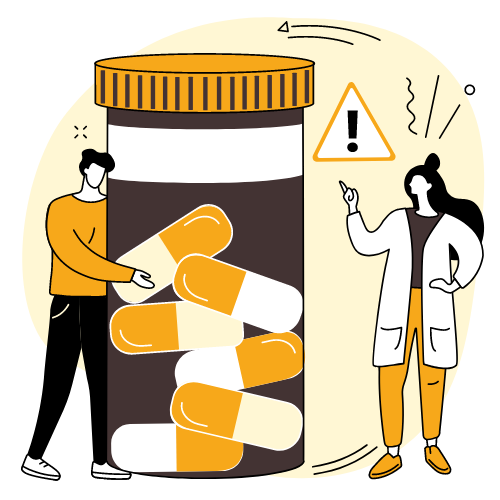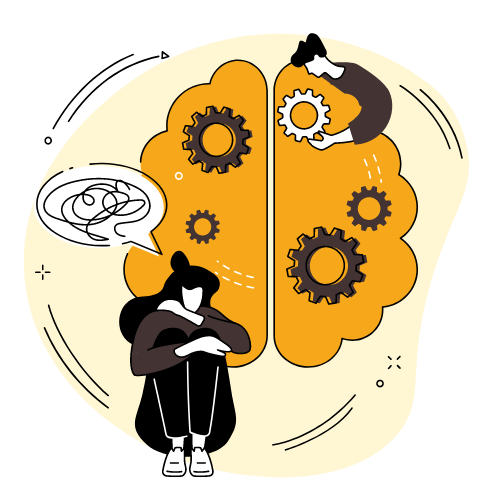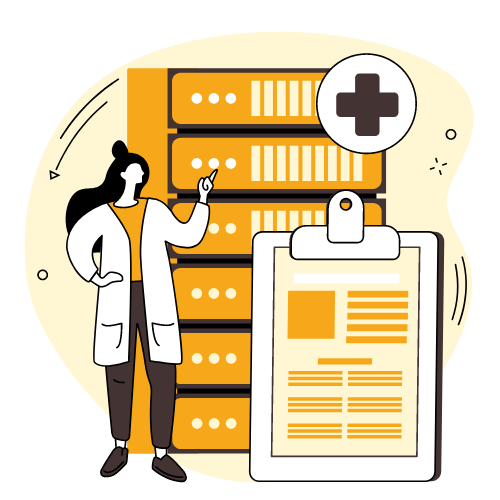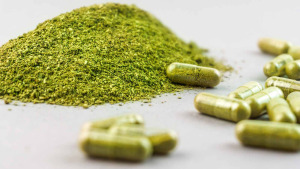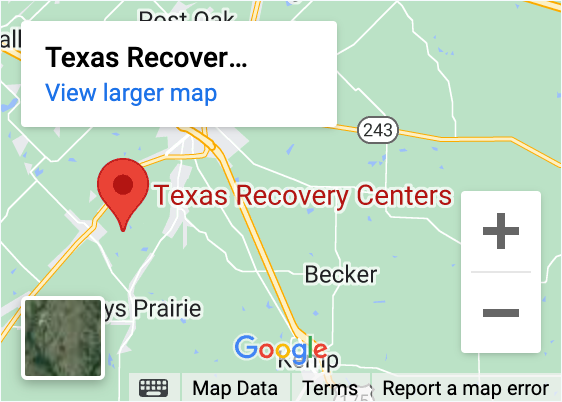Your overall health is one thing you most likely take seriously. After all, you probably found this page researching drug interactions. Let’s consider that a little more in-depth. It starts when your doctor prescribes a medication such as gabapentin to treat or alleviate a health condition. You probably leave the office, head out to the pharmacy to pick up your prescription, and return to your day’s activities. The prescription was suggested by someone you trust. You’re expecting it to be helpful and safe. Now let’s add in another consideration. Alcohol. If you’re consuming it at a responsible level and older than 21 to be used legally, all good right? Not so fast. Drug interaction can amplify side effects and cause potentially life-threatening situations. It is important to thoroughly educate yourself on how and why a prescription such as gabapentin is used to treat your condition. Adding alcohol to the mix is strongly cautioned in the use of gabapentin. Alcohol use disorder PLUS the prescription depressant can be a recipe for disaster. Let’s consider each separately and then when used as a whole.
How Does Alcohol Affect the Body?
Nearly 90% of adults age 18 and older report having consumed some alcohol in their lives. As it enters the body, alcohol is absorbed through stomach tissue into the bloodstream, which then spreads to other biological tissues. It takes just five minutes for alcohol to reach the brain, with its effects appearing within 10 minutes. [inline_cta_one] The liver begins to process alcohol after 20 minutes and is only able to metabolize one ounce per hour. Once a person reaches 0.08 blood alcohol, the legal limit, it will take five and a half hours to exit the system. Depending on how much alcohol is consumed, most people would be surprised to learn that it can remain in your urine for 80 hours and in hair follicles for upwards of three months.
Side Effects
Alcohol interferes with pathways in the brain and, depending on the level of alcohol in the body a person, causes pleasure, depression, disorientation, memory loss, severe physical and mental impairments, possible coma, or death. Alcohol misuse physical side effects:
- Decreased fine motor coordination
- Drowsiness or loss of consciousness
- Memory loss/slowed comprehension
- Impaired balance and sense of feeling
- Blurred vision and slurred speech
- Vomiting, urine incontinence
- Depressed breathing and heart rate
When used at dangerous levels, a person can enter into a life-threatening comatose state, with lack of pupil-to-light response, a severely decreased heart rate, or even suffer possible death.
What Does Gabapentin Treat?
Gabapentin was approved in 1993 by the US Food and Drug Administration as an anticonvulsant medication for partial seizure therapy. It is now approved to treat shingles, restless leg syndrome, and seizures or partial seizures in patients as young as age three. Federally, it is not listed as a schedule V controlled substance. Kentucky was the first state to classify gabapentin as a Schedule V drug in 2017, followed by several other states. Gabapentin is approved for prescription-level use, but not currently classified as a controlled substance in Texas. If physical or psychological misuse is determined to be a potential consideration, the drug may receive designation as a controlled substance. Drug benefits versus misuse potential determine the designated level for classification. [middle-callout] Off-label use (not officially approved to treat certain conditions) has been pursued for postmenopausal hot flashes to irritable bowel syndrome to chronic cough. In the case of mental health and substance use disorders, gabapentin has been explored to treat conditions such as bipolar disorder, anxiety, resistant depressant and mood disorders, alcohol withdrawal, social phobia, and post-traumatic stress disorder. This is mainly due to studies that show how the drug interacts with the brain’s overstimulated neurons to assist the chemical messenger (GABA) to reduce neuron activity. When taking a prescription medication to help with a physical or mental condition, there are many considerations due to the brain’s complex processing abilities. This is why the dosage and type of drug may be changed frequently until the patient receives the right protocol for his/her specific needs.
Side Effects
Now that we understand how and why gabapentin is prescribed, let’s consider possible side effects. They include:
- Abnormal eye movements that are continuous, uncontrolled, back-and-forth, or rolling
- Clumsiness or unsteadiness
- Constipation
- Diarrhea
- Difficulty speaking
- Drowsiness or tiredness
- Dry mouth
- Nausea
- Vomiting
- In December 2019, the FDA issued a warning that breathing difficulties can occur in patients with respiratory risk factors or who also use other substances that depressed the central nervous system
Effects When Mixing Gabapentin and Alcohol
When used together, gabapentin and alcohol could potentially have each of the above-listed side effects with a doubling effect on the ones shared: eye and speech-response delays, decreased state of consciousness, and vomiting, especially a danger when coupled with an unconscious state. A depressant itself, gabapentin is extremely dangerous in combination with another depressant, alcohol, and can cause respiratory distress. When used long-term a physical dependence develops and cessation of use can cause withdrawal with anxiety, confusion, and rarely, seizures. Substance interactions can decrease the effectiveness of a prescription or complicate a situation with unexpected side effects, with a risk of falling being commonly experienced. Missed dosing or even doubling a dose thought to already have been taken can occur. Someone might even take the wrong medication mistakenly during a confused state. When mixing gabapentin with alcohol, there could be life-threatening consequences. Alcohol or substance use disorders can also be an indication of another mental health issue and can be treated, if needed, as a dual diagnosis. According to the Substance Abuse and Mental Health Services Administration, eight million of the 20 million adult Americans with a substance use disorder had a co-occurring mental health disorder. Common dual diagnosis conditions with substance use disorders include anxiety, schizophrenia, depression, and bipolar, post-traumatic stress, eating, and personality disorders. Clients receive treatment to achieve balance through medications, behavioral therapies, or a variety of both. [inline_cta_three] Motivational interviewing helps direct other therapy approaches. The counselor identifies areas in life a client seeks to change and helps him/her develop confidence through motivation to gain control of behavior. Cognitive-behavioral therapy (CBT) helps a client uproot a negative mindset and the ensuing way it shapes behaviors, replacing it with positive thoughts and resulting behaviors. Dialectical behavioral therapy (DBT) was actually created to treat what may often be a dual diagnosis itself—borderline personality disorder. This behavioral therapy leads a person towards positive behaviors by developing and integrating mindfulness, acceptance, and change as a means to better sever ties to maladaptive behaviors. Together, these things increase a person’s confidence and their ability in addressing and solving problems in their life which may create triggers or temptation to use substances. Mindfulness and stress management engages a person in a way that cultivates a better self-awareness while addressing how stress may crop up within a person’s life. In integrating these two, a person is better adept at implementing coping skills to overcome moments that might otherwise prove to be a trigger linked to relapse and a return to substance use. Combined, these and other alcohol treatment modalities can create a landscape of healing, hope, acceptance, and change, enabling you to find a better, drug-free life.
FAQs:
Does Alcohol Interact With Gabapentin? Yes, alcohol and gabapentin interact together and can impair a person’s physical and mental state. Is it Bad to Mix Medicine and Alcohol? Alcohol and medicine mixing can be harmful. Both are known to make people drowsy or dizzy. When mixed with each other, the effects can be intensified, leading to difficulty concentrating, or falling and injuring oneself. What Drugs Should Not Be Taken With Gabapentin? Serious interactions may occur when gabapentin is mixed with opioids, cough and cold medications, or those that cause reduced respiration. Moderate interactions may occur when gabapentin is mixed with magnesium compounds, opioids, and benzodiazepines. Consult your doctor or pharmacist for more information. What Happens When You Mix Alcohol With Antipsychotics? When mixed, alcohol may reduce the effectiveness of the medication. Hallucinations and delusional thoughts may occur as a result. It can also increase fatigue and sleepiness.


